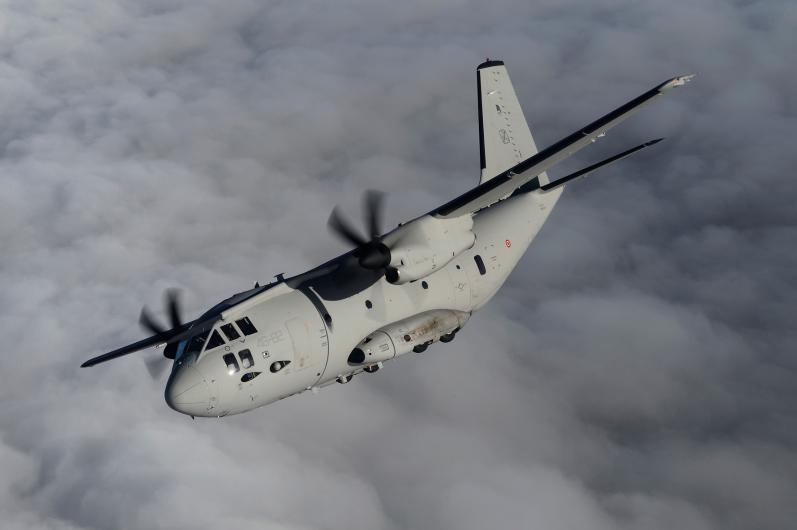The C-27J Spartan is a military transport aircraft developed and manufactured by Leonardo’s Aircraft Division (formerly Alenia Aermacchi until 2016). It is an advanced derivative of Alenia Aeronautica’s earlier G.222 (C-27A Spartan in U.S. service), equipped with the engines and various other systems also used on the larger Lockheed Martin C-130J Super Hercules. In addition to the standard transport configuration, specialized variants of the C-27J have been developed for maritime patrol, search and rescue, C3 ISR (command, control, communications, intelligence, surveillance and reconnaissance), fire support and electronic warfare and ground-attack missions. The C-27J has also been ordered by the military air units of Australia, Bulgaria, Chad, Italy, Greece, Kenya, Lithuania, Mexico, Morocco, Peru, Romania, Slovakia, and Zambia.

The Spartan, the most effective multi-mission medium turboprop airlifter available on the market today, is able to operate from the most rudimentary airstrips and in extreme environmental conditions. With 87 aircraft already sold to 16 operators across five continents, the C-27J offers high operational effectiveness together with competitive costs, extreme flexibility and interoperability with larger airlifters. Thanks to multiple roll-on/roll-off easily installable and transportable mission kits and systems, the C-27J can be quickly configured to carry out not only tactical transport including troops, cargo, paratroops and cargo airdrop, Medevac/Casevac and humanitarian assistance and disaster relief support, but also VIP transport, firefighting, ISR, Maritime Patrol and tactical support missions.

In 1995, Alenia and Lockheed Martin began discussions to improve Alenia’s G.222 using C-130J’s glass cockpit and a more powerful version of the G.222’s T64G engine and four-blade propellers. In 1996, a program began on an improved G.222, named C-27J; it used a U.S. military type designation based on the G.222’s C-27A designation. In 1997, Alenia and Lockheed Martin formed Lockheed Martin Alenia Tactical Transport Systems (LMATTS) to develop the C-27J. The design changed to use the C-130J Super Hercules’s Rolls-Royce AE 2100 engine and six-blade propeller. Other changes include a fully digital MIL-STD-1553 systems and avionics architecture, and an updated cargo compartment for increased commonality. The C-27J has a 35% increase in range and a 15% faster cruise speed than the G.222.

The Leonardo C-27J Spartan has the largest cargo bay in its class with a unique strong cargo floor supporting almost 5 tons per square meter and adjustable both in height and inclination, to facilitate operations. The C-27J has the best descent and climb rate (4,000 – 2,500 ft/min), can perform 3g tactical manoeuvers and is qualified to perform short take-offs and landings (STOL) on snowy, sandy and unprepared airfields. The combat proven C-27J can be equipped with a full Defensive Aids Sub-Systems suite, secure communications and battlefield ballistic protection in order to operate in high threat environments, delivering cargo, light trucks and personnel wherever they are needed. Its Auxiliary Power Unit (APU) guarantees autonomous operations.














